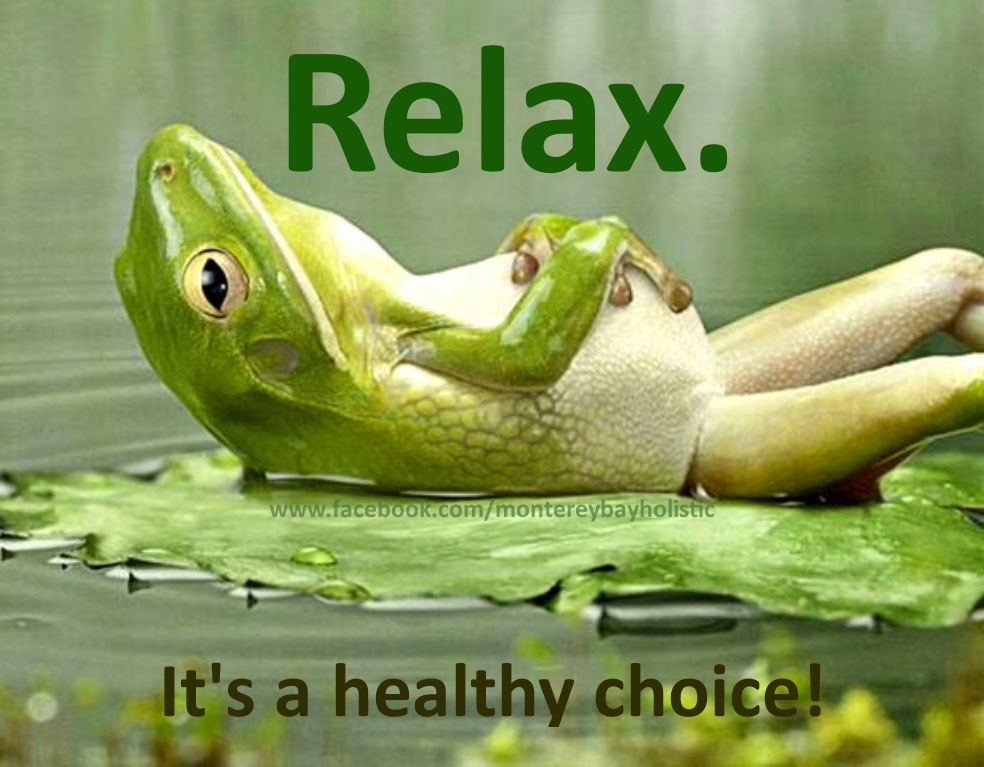
Hello everyone! It's Friday again and looks like it is shaping up to be another gorgeous weekend! For those of you who were unaware, I have been running a Stress Management educational class and mini-series during the month of April at all 3 JOHO sites. I promised those of you who were able to attend (and those who wanted to but couldn't) that I would post the information from the class up here on the blog. If you haven't been able to join us, and enjoy this material, consider coming to the second class. The first class isn't necessary to participate and it will be new information.
Physiological Effects of Stress:
We all know that uncomfortable, tense feeling when stress creeps up, and there are actual physiological processes going on in the body which cause those sensations.
- Sympathetic nervous system ("fight or flight response") is activated during stress causing:
- Increased cortisol ("stress hormone")
- Increased heart rate
- Increased respiration rate
- Increased blood pressure
- Muscle tension
- Fluttery,upset, or "nervous" stomach
Why does breathing help?
Breathing exercises, or focusing on the breath, can cause a relaxation response in the body. By focusing on the breath we are effectively able to trick our body into thinking we aren't stressed, and in return, gain the health benefits of relaxation.
- The parasympathetic nervous system is activated (this is the part of the nervous system which is normally predominant when you are not under stress)
- Respiration rate decreases
- Nitric oxide is released (causing relaxation of the blood vessels and lower blood pressure)
- Heart rate decreases
- Muscles relax
Breathing Exercise- 3 Part Breath
Find a comfortable seated position, in a quiet area, and allow the eyes to close.
Begin to tune into the breath, focusing on the way that the inhales and exhales feel. Allow the lips to gently seal, so that you are breathing through the nose. While focusing on the breath, if other thoughts enter your mind (and they probably will) just acknowledge them and let them go without attachment. Just as if they are just floating by.
Begin to deepen the breath by allowing the belly, chest/ribcage, and collar bones expand on the inhale, and fall/soften on the exhale. Focus on these three areas: belly, chest, collarbones. Practice breathing into these areas. After a few minutes, release the deep breathing and come back to your normal breath. Sit quietly as you notice your normal flow of breath and if anything has changed about it. Then blink the eyes open.
When can I practice breathing exercises?
The beauty of these exercises is that they don't require any special clothes or equipment, you can do them any time you are stressed (or even when you're not!) You can practice at your desk, on the metro, or anytime when you can just close your eyes safely (please don't try this while driving : ) If you would like to incorporate breathing/meditation into your daily routine, start with 3-5 minutes/ day anytime when it is convenient for you. Don't feel like you have try and practice each day, and don't get discouraged if you miss a day!
Progressive Muscle Relaxation
In combination with breathing, progressive muscle relaxation/ guided meditation can be a great tool to relax the body head to toe. Usually this is done with an instructor narrating, but there are many podcasts and downloads available to do this in the comfort of your own home.
Comments
Post a Comment